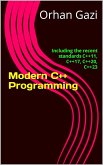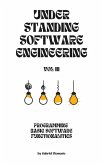Mankind has invested vast resources (time, manhours, computer machinery sunk costs, maintenance, building space, heating, venting, cooling, and so on) into software for all kinds of digital and analog hardware for over sixty years. Far longer if you consider punched cards, and so on. In the end, most of the source code ends in the waste heap of history. Old code gets forgotten, rubbished, and a new wave of developers is forced to recreate new versions of old ideas. People get promoted, graduate from college, and leave to get married; before they do they don't have time, don't believe in the priority, and don't place the code where others can find it to make an important curation of their software; and by this donate it to future generations, worldwide, the society at large. If organizations, at the other end of the spectrum, would realign software for a legacy of centuries instead of product runs, mankind can preserve the sunk costs, speed up advancement, and make software impact far wider when it's made in a reusable form. People move to a new job, and remake linked lists, factory classes, or ring buffers in the new language of the day, or within the design paradigm of the latest fad management. It's kind of insane when you think about it, people spend many years getting a consumer product working, finely tuned and profitable. Then two companies merge, product lines are unified or obsoleted, and some or all of the intellectual property gets forgotten in a corner as one team is merged and the others retire to golf, or the pool. While filling in cardboard boxes of stuff as they leave, does anyone drag out the old tapes and floppies to make sure the new guys aren't starting by reinventing the wheel? Why? The culture has a serious misunderstanding of where the value, where the intellectual property comes from and where it gets stored. This wasteful malaise needs to change. This book is a launching point, not a destination. It is designed to evolve in small, incremental ways along with your reusable software development guidelines, over many years. From novice coders starting out to experienced, and jaded, software managers; all practical and technical issues are presented in two natural layers ( for the simplest stratifications - explained in Section #)- one, the manifesto paints broad strokes in a proscriptive manner about how to steer your organization gradually towards code for longevity, and two, the toolbox brings together a set of free tools to get you
Dieser Download kann aus rechtlichen Gründen nur mit Rechnungsadresse in A, B, BG, CY, CZ, D, DK, EW, E, FIN, F, GR, HR, H, IRL, I, LT, L, LR, M, NL, PL, P, R, S, SLO, SK ausgeliefert werden.









